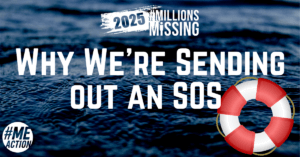Read Volume One and Volume Two.
Day #5 cont’d.
My partner and I hit a point of exhaustion.
From him having the flu, my turn in symptoms and the lack of wheelchair friendly locations, creating your own fun on a holiday is an easy concept when your cup is full but both our cups had been dry as a bone for a long time. We had some floating ideas of things to go see and do but all these plans quickly fell through once we realized that our location was poor for accessibility but rich in any Uber/Taxi Fare.
Once a year, there is a family holiday interstate.
Every year it would usually be Melbourne in which the location is accessible, public transport is accessible and mobility scooters could be hired. We knew where to find fun things to do, to be where the people are, see what the people see, to briefly experience a sense of normality.
However this year the destination of choice was Sydney.
There is nothing like symptoms and a lack of accessibility that can absolutely suck the fun out of any day, let alone a holiday.
We sat there in the hotel room on the night of the 5th Anniversary of my disabling factor and started to wonder whether sustained happiness was possible when disability is in your life.
The observation I made is that when you are able bodied and go on holiday, it’s an escape from the monotony of daily life. Everything is exciting, reviving and new. You can forget your life for just a little while.
When you go on holiday as a person with a disability and/carer, it amplifies the realities of every day life. Everything needs to be planned in advance, back-up plans made and daily care needs fit into a different time zone. You cannot forget your life, you cannot leave it as the plane takes off, it follows you wherever you go.
The concept of portraying happy and fulfilled people with disabilities in marketing materials, on TV and in the media is less to do with people with disabilities and more to do with those without a disability. Think of TV dramas, the soap dramas, the reality TV shows, they have taught us to live in extremes. That life is either absolutely perfect or absolutely tragic. That life either is monotonous and the storyline drags or there are so many plot twists in a short period of time, as the viewer looking in, your exhilaration just barely keeps up with the pace.
People without disabilities want reassurance that if tragedy occurs and disability enters their lives, that the absolutely perfect awaits them. This is the message and image portrayed because happiness equals reassurance and safety. That it’s ok because disability pension will be waiting for you, it’s ok because isn’t there the NDIS?
The false sense of security set by those without disabilities does not provide assurance to people with disabilities.
The reality is living with a disability is neither an experience of an extreme high or an extreme low but the ability to adopt a balanced base line that guides us through adversity.
To buy into the polarising image of disability is to disempower people with disabilities. It sets the expectation by wider society that as a person with a disability, I am not allowed to express my tragedy, my adversity because as people with disabilities, only succeed stories are permitted.
The moment we shine the light on our experience, the uncensored, raw version of our experience suddenly people without disabilities no longer feel safe, feel reassured, feel good, for a moment, they briefly feel what people with disabilities feel – uncomfortable isn’t it?
Though people without disabilities can return back to the safety of their reality, for most people with disabilities, there is no safe place to return to. With a disability, there is no going back.
Day #6 – Leaving Sydney
I wake up and I’m feeling sweaty, dizzy, my throat still raspy, my voice slowly disappearing.
Over the years, I have had issues with my voice and at times been barely vocal.
It had also become obvious over time that anything that triggered my immune system would have a high rate of setting off symptoms. So I had learnt to treat myself as immunocompromised in a bid to avoid major relapses, in a bid to avoid going to emergency departments and being treated like a malinger. That is why the ambulance was not called the other night, not due to a lack of medical necessity but due to previous experiences, previous attitudes. Over time I had learnt that even in the most extreme of symptoms, that because nobody knew the cause, it was up to me to find a way to survive.
We pack up the hotel room, the suitcases and the more I try to move around the faster I degrade.
Hobbling to the lift, I’m stumbling over my legs and by the time I get down to reception, I’m looking for the closest seat. I take a seat and struggle to stay awake.
The sister-in-law and her husband stand in front of us explaining where they had just gone for breakfast and all the things they had planned until they would head to the airport.
This is what normal life should be, carefree and set with adventures.
By contrast, we were heading to the airport, six hours early.
We arrive at the airport and I feel like passing out in my wheelchair, with my head flopping into whatever carry on luggage was lumped into my lap.
And so we sat there, in a quiet corner, near a gate.
Too weak to hobble to the toilet myself or to get food.
So I would be pushed in my wheelchair for most of the time. There would be moments where I thought I could tackle a small distance but would become dizzy and weak quickly on being upright for too long. Just navigating the female bathroom due to the disabled toilet being occupied was exhausting.
Eating food felt laboured, holding my upper body and head took immense effort.
By the time our gate was ready to board, I had improved slightly but I was more than ready to say goodbye to Sydney.
We land in Perth almost an hour ahead of schedule.
My wheelchair was waiting for me, as soon as the main passengers had disembarked.
We finally arrive home and somehow laying on our old queen ensemble felt more relaxing than what the hotel bed did. Our bedroom at home felt cosier and safer than the room in Sydney did.
And just for a little while, everything was normal.
Follow Nita Jane on Social Media

Why We’re Sending out an SOS this #MillionsMissing
On May 12th, #MEAction and the #MillionsMissing are sending out an SOS to Congress to Save our Support Systems. Save our Science. Save Our Society. HERE’S WHY: Healthcare, research funding and accessibility were already incredibly fragile for people with myalgic encephalomyelitis (ME), Long Covid and the disability communities. Now, we are seeing constant threats to



